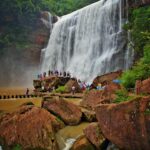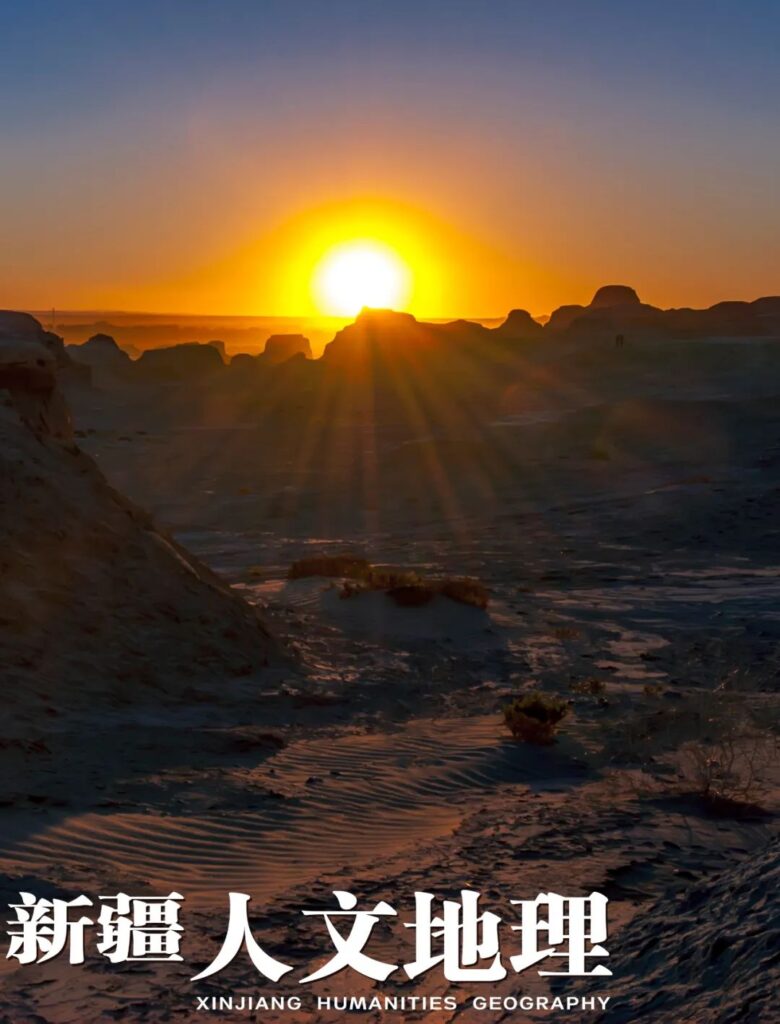
The Devil’s City, also known as Urho Wind City, is located in the Urho Mining Area of the Junggar Basin in Xinjiang Uyghur Autonomous Region. It is a typical yardang landform area, a national 4A-level scenic spot, and has been listed as one of the “100 Magical Landscapes of Northwest China.”


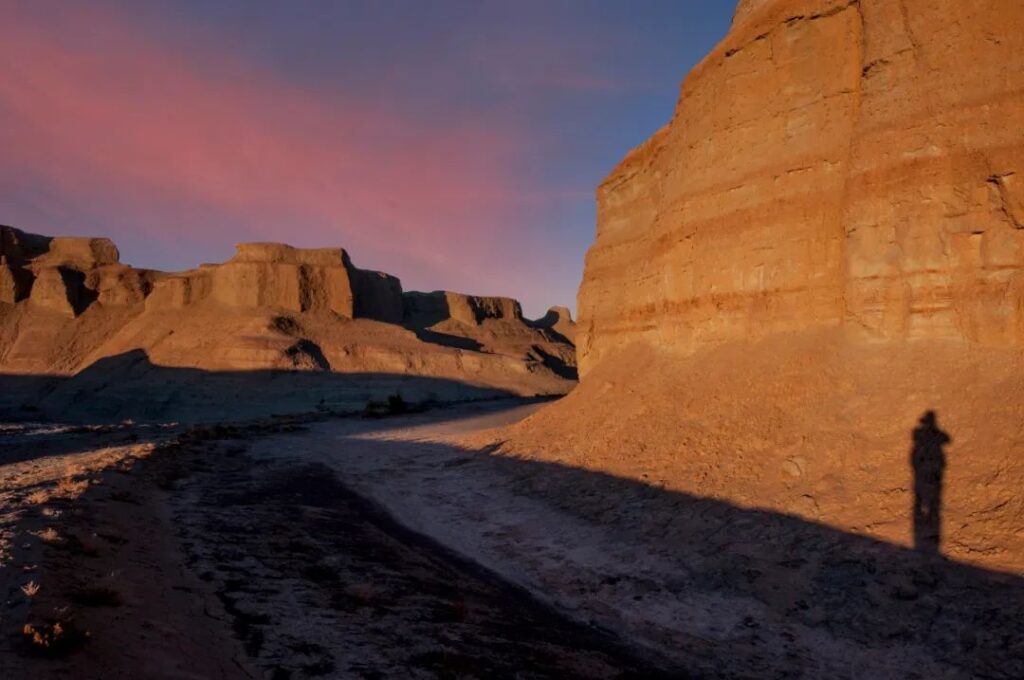
Situated on the northwestern edge of the Junggar Basin in Xinjiang, 100 kilometers southwest of Karamay City, the Devil’s City is a prime example of yardang landforms. These unique geological formations are the result of two key factors: the underlying lacustrine sedimentary layers and the erosive forces of strong directional winds and water in desert environments.


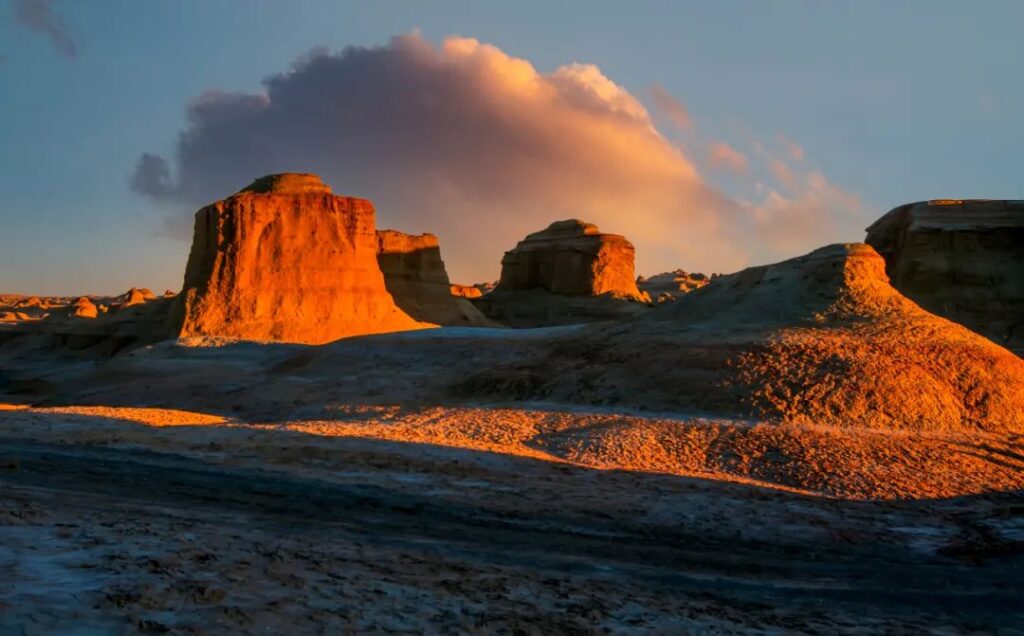
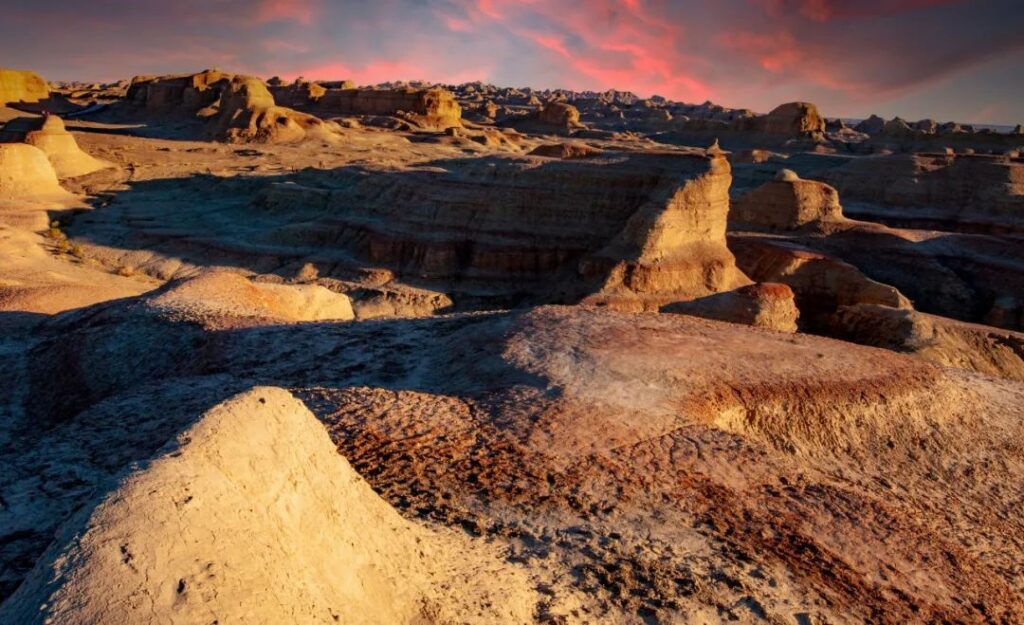
A fascinating legend surrounds the Urho Devil’s City, offering a cautionary tale. According to the story, this area was once home to a magnificent castle where handsome men and beautiful women lived in harmony and prosperity. However, as wealth accumulated, evil began to corrupt their hearts, leading to a life of debauchery and conflict. When a deity disguised as a beggar came to warn them, they responded with mockery and insults. Enraged, the deity transformed the castle into ruins, trapping its inhabitants beneath, where they eternally wail in belated repentance.
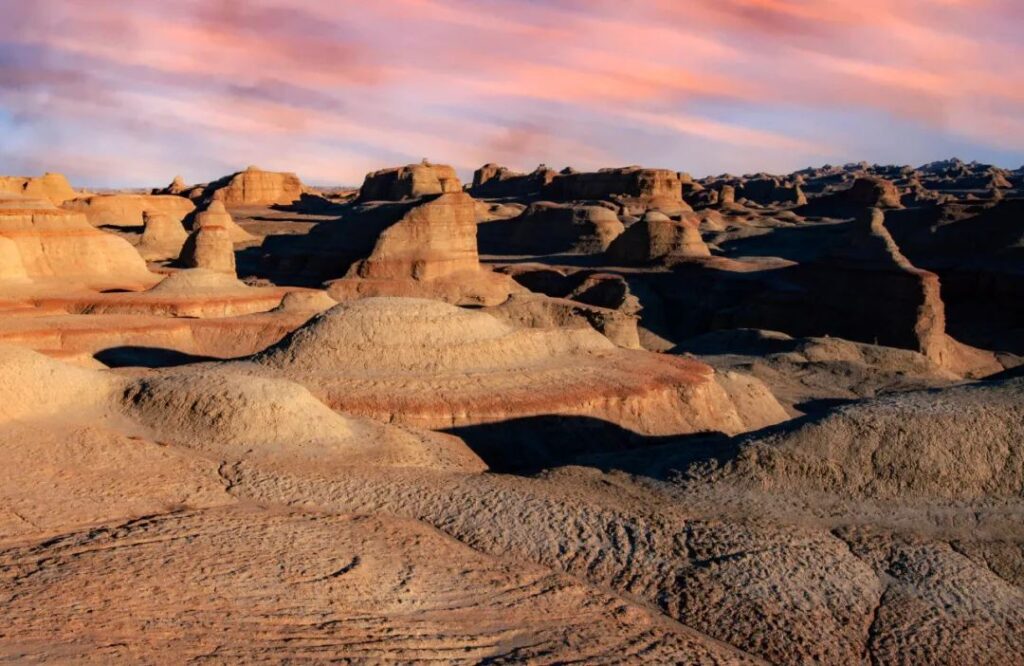
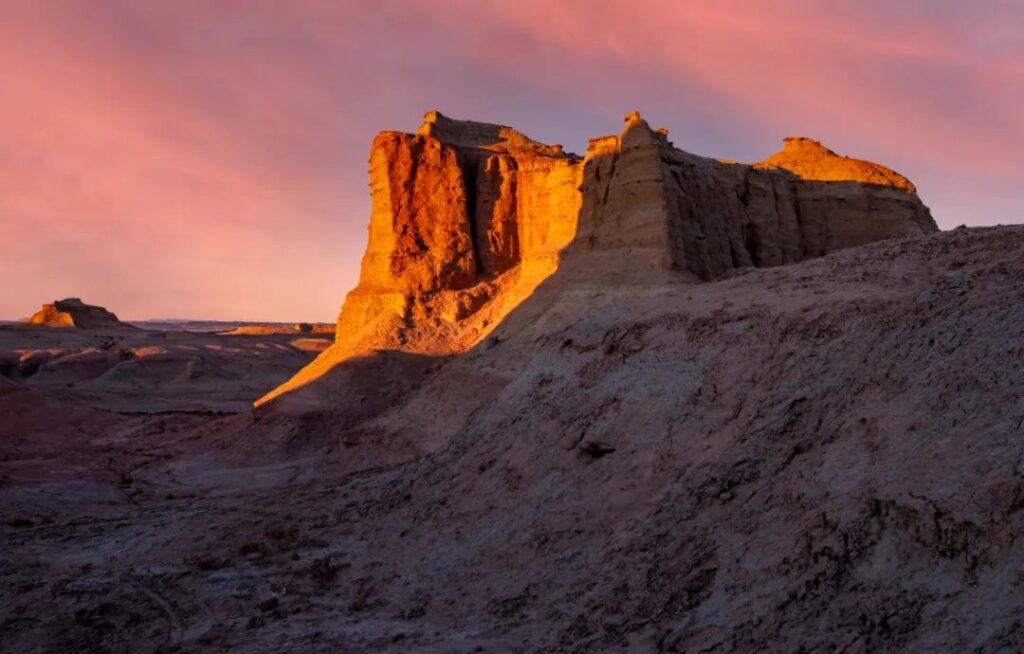
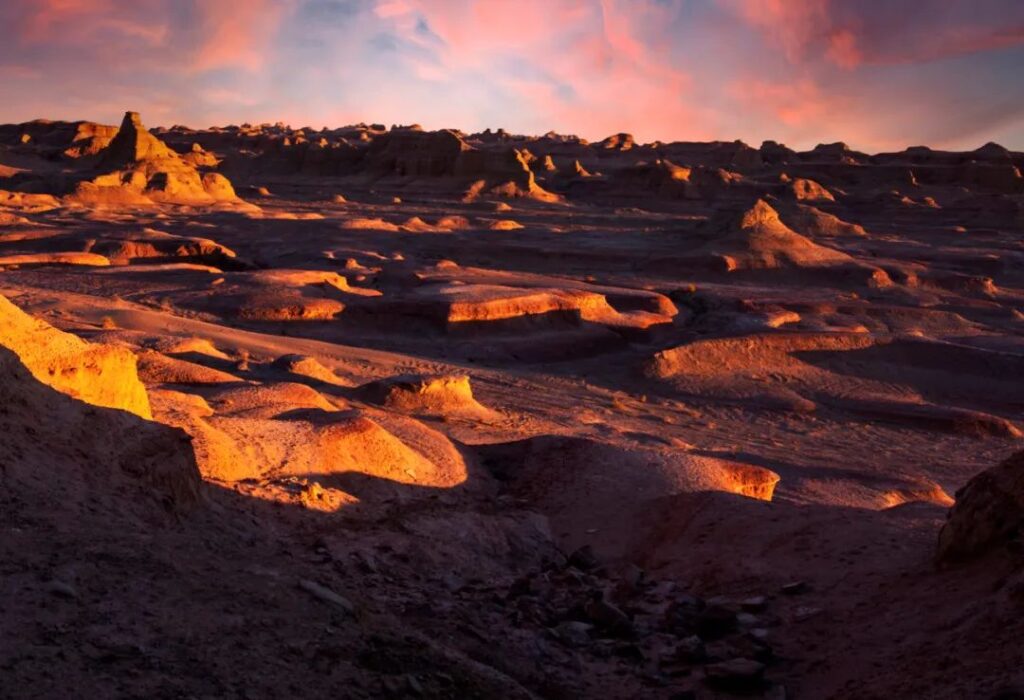
Yardang landforms were first mentioned in the “Book of Han” by the Eastern Han historian Ban Gu, where they were described as “dragon cities” or “white dragon mounds.” The term “yardang” itself was introduced by Swedish explorer Sven Hedin during his expedition to Lop Nur from 1899 to 1903, derived from the local Uyghur word meaning “steep-walled hills.”
In China, yardang landscapes are primarily found in the northwestern part of the Qaidam Basin in Qinghai, the middle and lower reaches of the Shule River west of Yumen Pass, the western and eastern parts of the Junggar Basin in Xinjiang, the Turpan Basin, and the northern edges of the Tarim Basin.
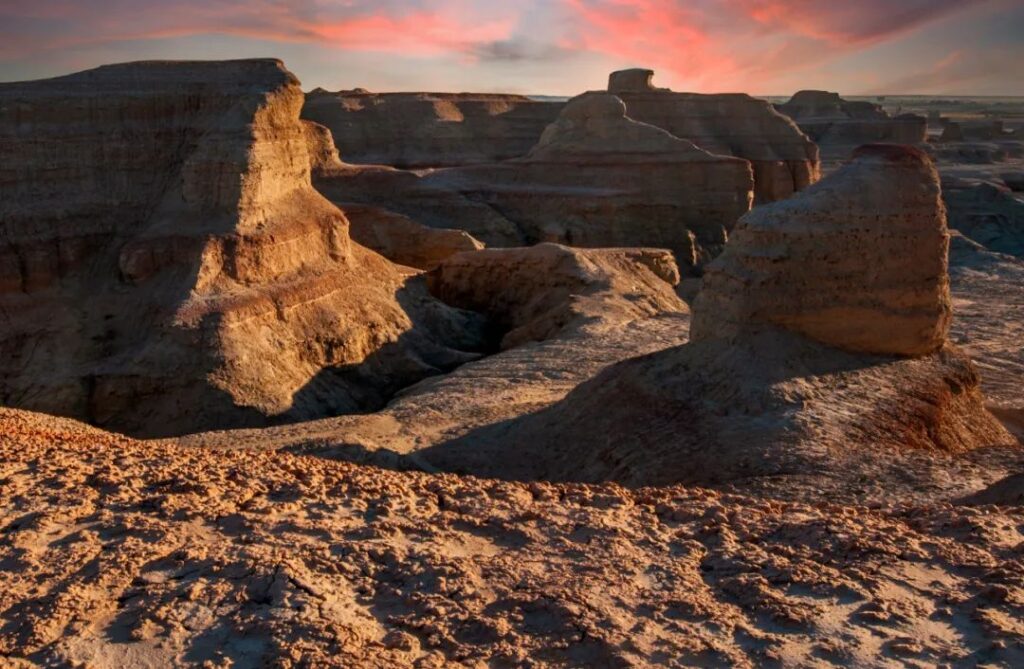
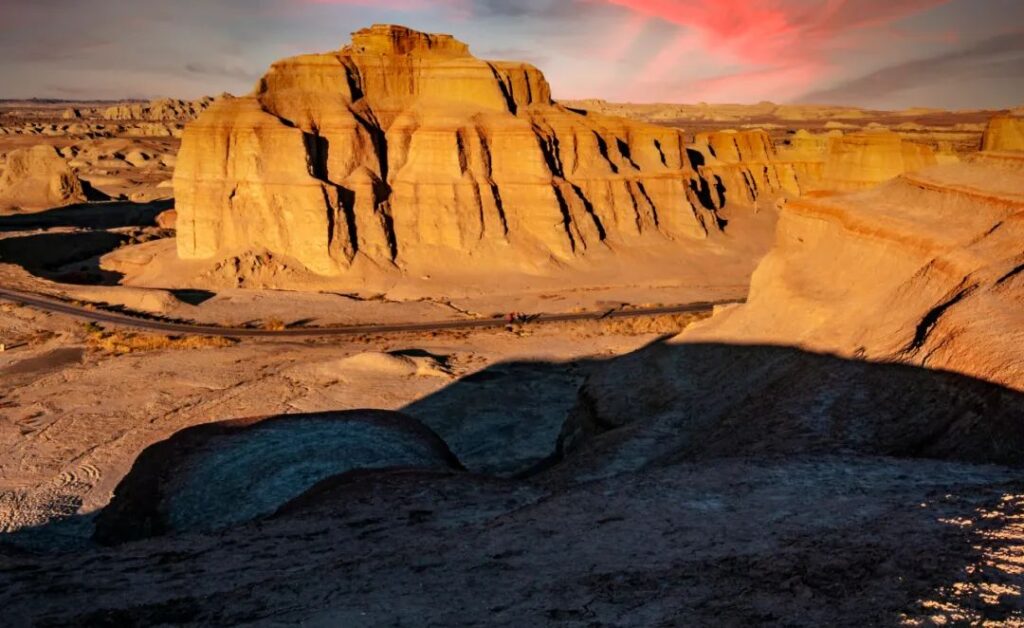
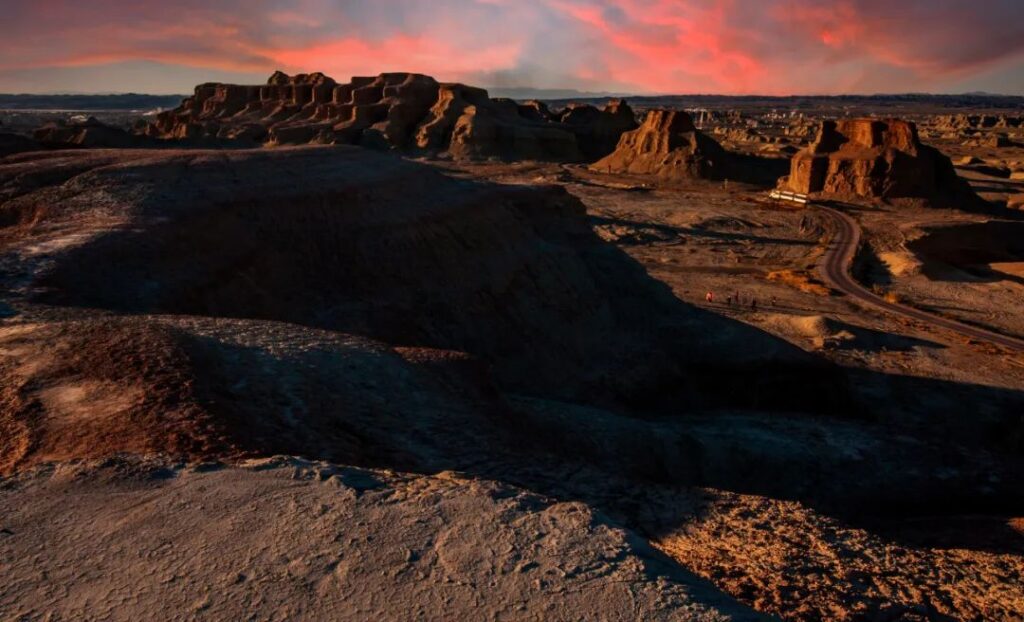
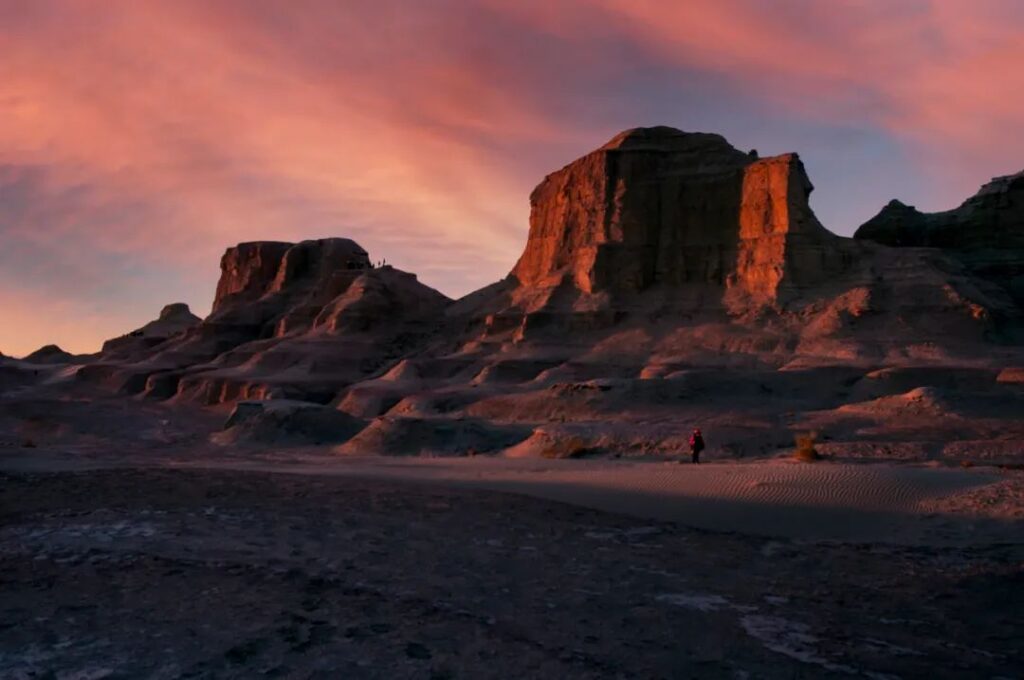
Over thousands of years, wind, rain, and floods have sculpted this landscape like a master artist. The result is a series of valleys and oddly-shaped rock formations reminiscent of medieval castles or even the Sphinx of Egypt, all set against the backdrop of the eastern Gobi Desert.
The Devil’s City in Karamay has been named the most beautiful of “China’s Three Great Yardangs” by China National Geographic magazine. It has served as a filming location for several movies, including “Seven Swords,” “Crouching Tiger, Hidden Dragon,” and “Visitors on the Ice Mountain,” attracting numerous tourists.
Standing amidst the seemingly endless expanse of the Devil’s City on a quiet day can evoke a surreal feeling of witnessing the aftermath of an apocalyptic event. This natural masterpiece, shaped by wind and water over millennia, offers visitors a unique opportunity to step into a world crafted by the powerful forces of nature and the passage of time.
